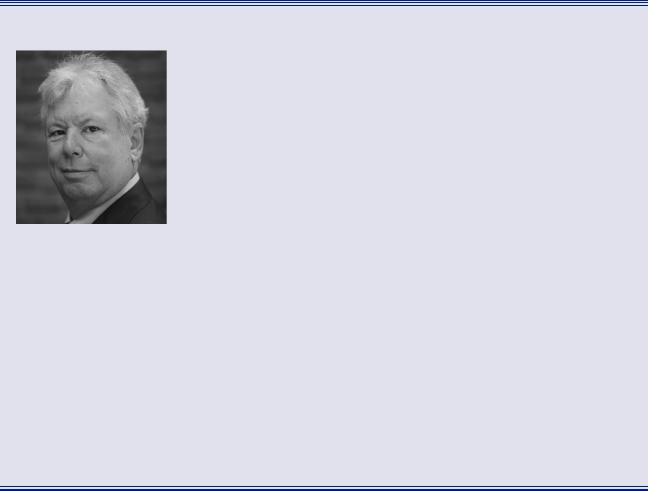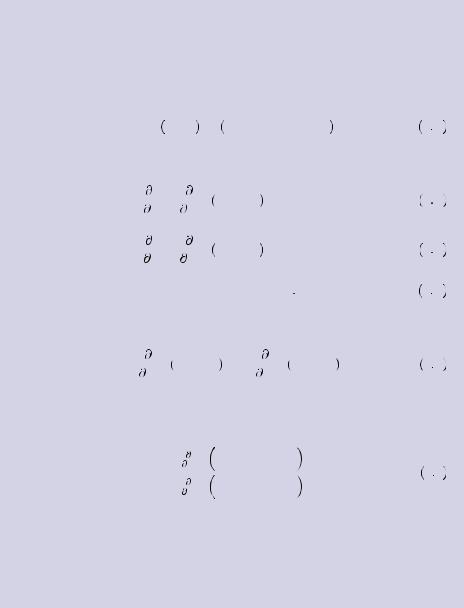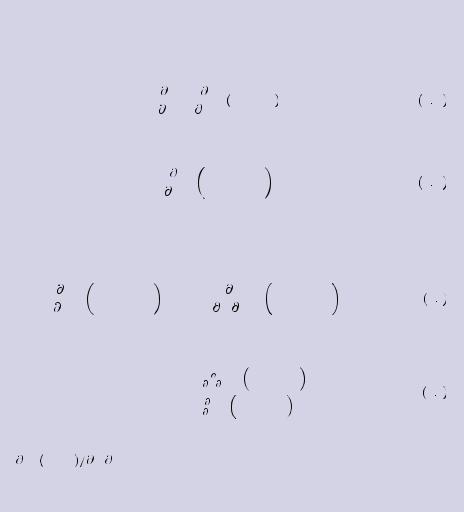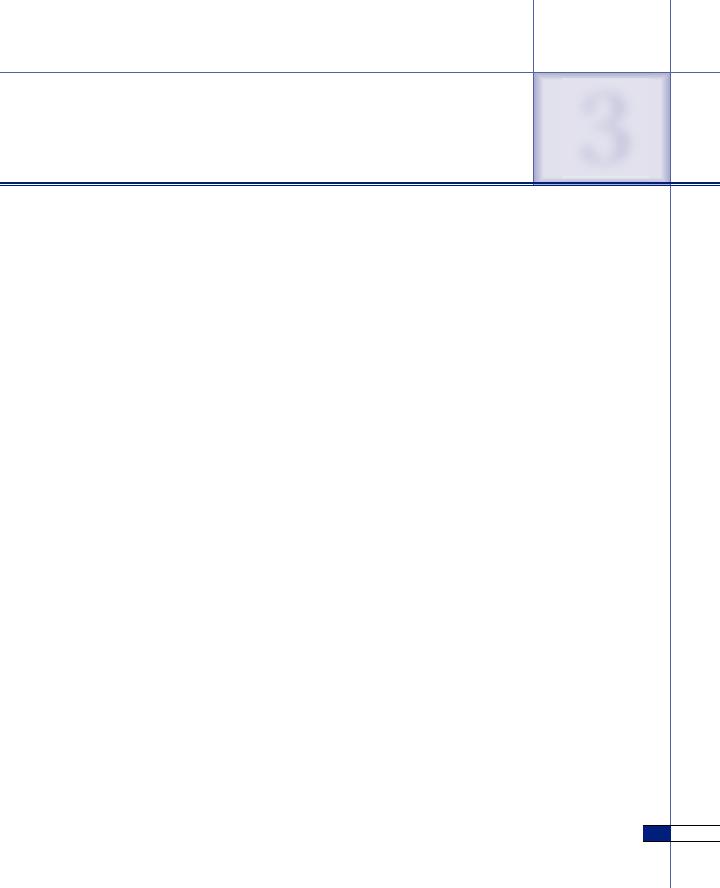
- •Brief Contents
- •Contents
- •Preface
- •Who Should Use this Book
- •Philosophy
- •A Short Word on Experiments
- •Acknowledgments
- •Rational Choice Theory and Rational Modeling
- •Rationality and Demand Curves
- •Bounded Rationality and Model Types
- •References
- •Rational Choice with Fixed and Marginal Costs
- •Fixed versus Sunk Costs
- •The Sunk Cost Fallacy
- •Theory and Reactions to Sunk Cost
- •History and Notes
- •Rational Explanations for the Sunk Cost Fallacy
- •Transaction Utility and Flat-Rate Bias
- •Procedural Explanations for Flat-Rate Bias
- •Rational Explanations for Flat-Rate Bias
- •History and Notes
- •Theory and Reference-Dependent Preferences
- •Rational Choice with Income from Varying Sources
- •The Theory of Mental Accounting
- •Budgeting and Consumption Bundles
- •Accounts, Integrating, or Segregating
- •Payment Decoupling, Prepurchase, and Credit Card Purchases
- •Investments and Opening and Closing Accounts
- •Reference Points and Indifference Curves
- •Rational Choice, Temptation and Gifts versus Cash
- •Budgets, Accounts, Temptation, and Gifts
- •Rational Choice over Time
- •References
- •Rational Choice and Default Options
- •Rational Explanations of the Status Quo Bias
- •History and Notes
- •Reference Points, Indifference Curves, and the Consumer Problem
- •An Evolutionary Explanation for Loss Aversion
- •Rational Choice and Getting and Giving Up Goods
- •Loss Aversion and the Endowment Effect
- •Rational Explanations for the Endowment Effect
- •History and Notes
- •Thought Questions
- •Rational Bidding in Auctions
- •Procedural Explanations for Overbidding
- •Levels of Rationality
- •Bidding Heuristics and Transparency
- •Rational Bidding under Dutch and First-Price Auctions
- •History and Notes
- •Rational Prices in English, Dutch, and First-Price Auctions
- •Auction with Uncertainty
- •Rational Bidding under Uncertainty
- •History and Notes
- •References
- •Multiple Rational Choice with Certainty and Uncertainty
- •The Portfolio Problem
- •Narrow versus Broad Bracketing
- •Bracketing the Portfolio Problem
- •More than the Sum of Its Parts
- •The Utility Function and Risk Aversion
- •Bracketing and Variety
- •Rational Bracketing for Variety
- •Changing Preferences, Adding Up, and Choice Bracketing
- •Addiction and Melioration
- •Narrow Bracketing and Motivation
- •Behavioral Bracketing
- •History and Notes
- •Rational Explanations for Bracketing Behavior
- •Statistical Inference and Information
- •Calibration Exercises
- •Representativeness
- •Conjunction Bias
- •The Law of Small Numbers
- •Conservatism versus Representativeness
- •Availability Heuristic
- •Bias, Bigotry, and Availability
- •History and Notes
- •References
- •Rational Information Search
- •Risk Aversion and Production
- •Self-Serving Bias
- •Is Bad Information Bad?
- •History and Notes
- •Thought Questions
- •Rational Decision under Risk
- •Independence and Rational Decision under Risk
- •Allowing Violations of Independence
- •The Shape of Indifference Curves
- •Evidence on the Shape of Probability Weights
- •Probability Weights without Preferences for the Inferior
- •History and Notes
- •Thought Questions
- •Risk Aversion, Risk Loving, and Loss Aversion
- •Prospect Theory
- •Prospect Theory and Indifference Curves
- •Does Prospect Theory Solve the Whole Problem?
- •Prospect Theory and Risk Aversion in Small Gambles
- •History and Notes
- •References
- •The Standard Models of Intertemporal Choice
- •Making Decisions for Our Future Self
- •Projection Bias and Addiction
- •The Role of Emotions and Visceral Factors in Choice
- •Modeling the Hot–Cold Empathy Gap
- •Hindsight Bias and the Curse of Knowledge
- •History and Notes
- •Thought Questions
- •The Fully Additive Model
- •Discounting in Continuous Time
- •Why Would Discounting Be Stable?
- •Naïve Hyperbolic Discounting
- •Naïve Quasi-Hyperbolic Discounting
- •The Common Difference Effect
- •The Absolute Magnitude Effect
- •History and Notes
- •References
- •Rationality and the Possibility of Committing
- •Commitment under Time Inconsistency
- •Choosing When to Do It
- •Of Sophisticates and Naïfs
- •Uncommitting
- •History and Notes
- •Thought Questions
- •Rationality and Altruism
- •Public Goods Provision and Altruistic Behavior
- •History and Notes
- •Thought Questions
- •Inequity Aversion
- •Holding Firms Accountable in a Competitive Marketplace
- •Fairness
- •Kindness Functions
- •Psychological Games
- •History and Notes
- •References
- •Of Trust and Trustworthiness
- •Trust in the Marketplace
- •Trust and Distrust
- •Reciprocity
- •History and Notes
- •References
- •Glossary
- •Index

|
|
|
|
Rational Explanations for Flat-Rate Bias |
|
33 |
|
Rational Explanations for Flat-Rate Bias
Two primary rational explanations have been given for the flat-rate bias. The first supposes that consumers might not actually know the amount of use they are projected to have. Given this uncertainty about use, they might opt for the fixed-price plan to avoid the uncertain cost of consumption. For example, it may be that one occasionally uses a cell phone extensively, whereas in a normal month one might only use a few minutes. Expected utility theory suggests that a consumer may be willing to reduce the average payout of a gamble in return for eliminating the uncertainty. The flat-rate bias could be explained by the same phenomenon where consumers are willing to pay a larger amount on average to ensure that they are certain of the eventual total cost. In this case, although future use is a decision variable rather than an externally determined random variable, the value of the calls may be random. Thus, one might buy the fixed-price option because of the value of the option to place more calls without facing a penalty. Kridel, Lehman, and Weisman find that this appears to be a good explanation for many of the apparent mistakes in pricing choices.
Eugenio Miravete claims that there is little evidence of incorrect choices to begin with. He uses a survey of telephone customers’ anticipated and actual use of services in Kentucky to determine the extent of such errors. In fact, he finds that customers’ anticipated use was consistent with the pricing scheme they chose. Further, he finds evidence that customers respond to charges in a way that suggests they are trying to minimize their bill given their level of use. Thus, those who incorrectly predicted their use usually shifted to the correct service plan after discovering the error. He finds that less than 6% of customers commit the error of subscribing to a flat-rate service when they would have benefited by using another system. His explanation for the observed errors is that consumers are in transition and still discovering which is the best plan for them. He concludes that the rational model of pricing choice is the best model to describe behavior. Miravete finds that among those who choose the flat rate pricing, a majority overestimate their eventual use of the phone service. However, even if the phone-use data contain no direct or incontrovertible evidence of the anomaly, the data are consistent with the underlying behavioral tendencies that could lead to the anomalous behavior. Even if the anomalous behavior is not evident, a behavioral economist would find the consumer’s formation of use forecasts important in discerning the motivations for behavior.
History and Notes
Although there was ample evidence and discussion before his observation, Kenneth Train is credited with coining the term flat-rate bias in discussing telephone pricing plans in 1994. In coining this term he cited evidence from his own work from the 1980s. This bias has been noted in Internet subscriptions, software licensing, electricity use, and gym memberships. Not only is there evidence of the flat-rate bias, but there is also evidence that those subscribing through a flat rate are much less likely to abandon service. Thus, the service provider not only gets more money for the level of service, but it is also more likely to retain the customer. Thus there is substantial incentive for service providers to offer a flat-rate option for premium levels of use.

|
|
|
|
|
34 |
|
TRANSACTION UTILITY AND CONSUMER PRICING |
Transaction Utility and Consumer
Preferences in Reference
Often our perception of how good a deal we have achieved depends not only on the amount we are able to consume and the quality of the good itself but also on the context within which we make our purchase. In some contexts, items are expected to be more expensive than in other contexts. This leads consumers to display very different demand behavior depending upon the purchase context. Someone might refuse to purchase a good in one venue because it is too expensive, but the same person might purchase the good at an identical price when in a context where the price seems justified. Consumers might use cues from the environment or memory of previous transactions in similar contexts to form an idea of what is a fair price. A comparison used to aid in making a decision is called a reference point. For example, your reference point may be the price you have paid in the past at a particular establishment. If a hamburger has always cost $5 at a particular restaurant, that hamburger might feel like a particularly good deal if you could purchase it for $3. It might feel like a terrible deal if the price rose to $6. Thus the reference point can play an important role in determining the consumer’s transaction utility. The reference point may be influenced by the context. An identical hamburger at another restaurant might always be priced at $2. Here it might feel like you have been ripped off if they were to suddenly increase the price to $3.
EXAMPLE 2.6 Beverage Demand and References
Richard Thaler surveyed consumers about their intended behavior under a couple of different hypothetical scenarios. Each respondent saw only one scenario. The first asks you to consider that you are at the beach on a hot day and want to buy a bottle of your favorite beer. A companion offers to get you one from a run-down grocery store. Your friend asks how much you are willing to pay for the beer, saying she will buy it if the price is less than or equal to your stated willingness to pay. The second scenario is identical except that instead of a run-down grocery store, your friend is going to a fancy resort hotel. Note that both scenarios suggest that the respondent will receive their favorite beer, and thus the item itself is identical in both choices. Respondents were willing to pay much more for the beer from the resort than from the grocery store (median value of $2.65 versus $1.50). Moreover, because both scenarios involve consuming the beer on the beach with the friend after she returns, there is no chance that environmental factors could influence the utility the consumer derives from the beer. Thus, the willingness to pay for the experience was influenced by the context in which the purchase takes place.

|
|
|
|
Theory and Reference-Dependent Preferences |
|
35 |
|
EXAMPLE 2.7 Internet Auctions
Internet auctions often offer either a minimum bid or a price at which the potential buyer could forgo the auction altogether and buy the item outright—sometimes called a buy now price. Anna Dodonova and Yuri Khoroshilov examined how the listed buy now price affected bids on a jewelry auction website. They found several mass-marketed items that come up for auction regularly on the site that could offer valid comparisons of behavior. This allowed them to compare items that are identical in design and content and thus in market value. However, the buy now price varied among the auctions. When items were posted with higher buy now prices, bidders placed higher bids, signaling that they valued the item more highly than when they saw the identical item with a low buy now price. Somehow, the buy now price had influenced the bidders’ valuations, perhaps by creating a reference point.
Theory and Reference-Dependent Preferences
The response of consumers to context in forming consumption decisions tells us a lot about how transaction utility works. To use the notion of transaction utility in predicting behavior, we need to know the potential reference points that drive the decision behavior. Thus, a behavioral theory of reference points might suppose that the consumer considering the purchase of a good will be influenced by her transaction utility for the purchase given the context of the purchase, z x, p
x, p ξ
ξ , where ξ represents the reference point in the given context. The consumer will also be influenced by the utility of consumption, as in equation 2.8. This particular theory contains very little predictive power because it does not tell us how the reference point was created or how we could determine it.
, where ξ represents the reference point in the given context. The consumer will also be influenced by the utility of consumption, as in equation 2.8. This particular theory contains very little predictive power because it does not tell us how the reference point was created or how we could determine it.
We could create a procedural rational model of reference point selection. For example, the reference price may be the average price the consumer had previously observed in a particular context (e.g., a resort hotel). This would tell us that the consumer considered previous observed prices in determining if the price was reasonable or not. If the price was higher than at previous resorts, the consumer would think it was a bad deal and have a lower transaction utility. If the price was lower than at previous resorts, the consumer would feel she had gotten a good deal. There is substantial evidence of the use of reference points in decision making. This concept is examined in several of the chapters in this book.
A pervasive problem with using reference-based behavioral theories is that we seldom have a theory describing why a consumer selects a particular reference point. One of the reasons for a lack of clarity in theory is that it can be difficult to test for differences in reference points empirically. In purchasing behavior, the formation of reference points may be particularly difficult to isolate. What is it that quintessentially separates a resort hotel from a run-down grocery store? How can we classify different purchasing locations or experiences into different categories? Does the presence of luxury items nearby signal that higher prices are to be expected?
|
|
|
|
|
36 |
|
TRANSACTION UTILITY AND CONSUMER PRICING |
Alternatively, some have found success in manipulating reference points. For example, the buy now price creates a very simple reference point. In this case, the bidder will purchase or not purchase the item but will judge the transaction utility of a potential purchase based on what price she pays relative to the buy now price. In this case, transaction utility may be written as z p
p pbn
pbn , where pbn is the buy now price and where transaction utility is decreasing in p and increasing in pbn. By raising the buy now price, the consumer is more likely to be willing to purchase at a higher price because she will receive a greater transaction utility in addition to the same level of consumption utility.
, where pbn is the buy now price and where transaction utility is decreasing in p and increasing in pbn. By raising the buy now price, the consumer is more likely to be willing to purchase at a higher price because she will receive a greater transaction utility in addition to the same level of consumption utility.
For the manager trying to set prices within her store, the implication is that one can manipulate the reference point of the consumer and potentially receive higher prices and greater profit. Stores can list comparison prices for items that they are selling in order to induce customers to feel they are obtaining a good deal. We often hear of stores that perpetually mark items as on sale in order to induce this type of feeling. For example, consumers are more likely to buy an item marked “On sale for $2 regularly $4” than they are to buy the same item marked simply $2. The item may be the same price, but consumers feel they are getting a better deal in comparison to the regular price. Stores often manipulate regular and sale prices to take advantage of this behavior. Some stores that offer everyday low prices instead advertise their own price in relation to their competitors’ regular price to the same effect.
From a normative standpoint, transaction utility can lead consumers to make two types of mistakes. First, consumers might purchase items that they otherwise would not want, simply because they think they are getting a good deal. Second, consumers might fail to purchase things that would make them better off because the context suggests a lower reference price to them. In this case, a consumer might not purchase the $3 hamburger at a relatively cheap restaurant even though she would be willing to pay $5 for the same sandwich at a relatively more expensive restaurant. Normatively, consumers would receive higher consumption utility if they did not consider the transaction utility and made purchase decisions based on price irrespective of context. The difficulty in offering our consumers prescriptive advice is that we do not know which context represents true consumption preferences. Nevertheless, we are often given advice designed to combat such context-dependent preferences. For example, one should never use the snacks provided in your room at a high-end hotel: The markup is enormous.
Rational Explanations for Context-
Dependent Preferences
Two primary alternative explanations exist for reference-dependent preferences. First, it may be that the context itself conveys information. For example, bidders might not have substantial knowledge about the prices of jewelry and might look to the buy now price to learn something regarding the overall value of the item. Although this might not be the best way to research the price of a good, other ways may be prohibitively costly in terms of effort or time. In this case, it might not be the reference point that was manipulated but simply the bidder’s expectation of prices she may be able to obtain if she looked

|
|
|
|
Rational Explanations for Context-Dependent Preferences |
|
37 |
|
elsewhere for a similar item. In this case, shifting bids may be perfectly rational given the costs of alternative forms of learning.
Alternatively, it could be that some contexts truly add value to goods. Whereas the beach example is carefully constructed to try to avoid this issue, in practice it may be hard to isolate the reference-point effect from the effect of context on value in a moregeneral consumption setting. I may be willing to pay more for a hot dog at a Chicago Cubs baseball game because I have fond memories of consuming a hot dog at another game in the past. Or I may be willing to pay more for a beverage at a resort because I like the atmosphere in the resort more than that of a run-down grocery store. If the atmosphere is a complement for consumption of a particular good, then willingness to pay for that good should increase in context.
Biographical Note
© Benschop/Hollandse Hoogte/Redux
Richard H. Thaler (1945–)
B.A., Case Western Reserve University, 1967; M.S.,
University of Rochester, 1970; PhD, University of
Rochester, 1974; held faculty positions at the
University of Rochester, Cornell University, and the
University of Chicago
Though all his degrees were in economics, Thaler is famous for incorporating concepts from cognitive psychology into models of economic decision making. Many consider him to be the founder of behavioral economics. From his early work on, he has asserted
that consumers suffer from biases in perception as well as emotions that influence decisions. Much of his work has been in the development of the field of behavioral finance, focusing on how behavioral biases can influence financial markets. He laid the foundation for nearly every behavioral economics contribution to date. From 1987 to 1991 (and occasionally thereafter) he produced a series of review articles for the Journal of Economic Perspectives entitled “Anomalies.” In it he wrote of phenomena that appeared to defy rational economic modeling. For many academic economists, this was their first serious exposure to the field of behavioral economics and helped to codify and define the field. His fingerprints can be found throughout the field of behavioral economics. More recently, he has become an advocate for the notion of using behavioral economics to create policies that do not restrict choice but that have a tendency to lead the consumer to a desired decision. The case for such policies is made in his book Nudge with Cass Sunstein. Daniel Kahneman praised Thaler for his direct contributions in incorporating psychology and economics and for the contributions of the many students who have flocked to work with him.

|
|
|
|
|
38 |
|
TRANSACTION UTILITY AND CONSUMER PRICING |
T H O U G H T Q U E S T I O N S
1.This chapter has presented some evidence that consumers derive utility from getting a good deal. Have you observed evidence that people purchase goods when it is not necessarily in their best interest just so they can get a good deal?
2.If retailers and manufacturers are aware that consumers derive utility from “getting a good deal,” they may be able to take advantage of this to increase their own profits. Can you find evidence that retailers take steps to manipulate the perception of the deals they offer?
3.Policy makers concerned with the increasing number of overweight consumers have long complained about the pricing of sodas at fast food restaurants. In most cases, a small soda (usually around 16 ounces) sells for a couple dollars. For just a few cents more, one could purchase a drink that was double that size and obtain a much better deal. Why would fast food chains offer such steep discounts on larger sodas? In one extreme case, a major fast food chain has offered all sizes of drinks for the same price. How could this be profitable? Policymakers have suggested requiring linear pricing (eliminating discounts for larger amounts) to fight obesity. New York also attempted to ban the sale of large soft drinks. Are these policies likely to be effective?
4.Suppose a telephone company had two kinds of cus-
tomers. One had a utility function that could be repre-
sented as u1 x
x = 5x − x2 − k
= 5x − x2 − k x
x , where x is the total amount of time spent on the phone and k is the total cost
, where x is the total amount of time spent on the phone and k is the total cost
to the customer for service. This results in a marginal
utility curve |
u1 |
x |
x = 5 − 2x − k |
x. |
The |
other |
|||||
type of consumer possesses a utility function |
that |
||||||||||
can be |
written |
as |
u2 |
x = 5x − x2 − k x |
− x |
k x , |
|||||
resulting |
in |
a marginal |
utility curve |
u2 |
x |
x = |
|||||
5 − 2x − k |
x − |
k x |
− x |
k x |
|
. Suppose |
that |
each |
faces |
||
x |
|
||||||||||
|
2 |
|
|||||||||
|
|
|
k x |
|
|
|
|
|
|
||
R E F E R E N C E S
Arkes, H.R., and C. Blumer. “The Psychology of Sunk Cost.”
Organizational Behavior and Human Decision Processes
35(1985): 124–140.
Della Vigna, S., and U. Malmendier. “Paying Not to Go to the Gym.”
American Economic Review 96(2006):694–719.
Dodonova, A., and Y. Khoroshilov. “Anchoring and the Transaction Utility: Evidence from On-Line Auctions.” Applied Economics Letters 11(2004): 307–310.
no budget constraint (so that they will purchase until marginal utility declines to zero). Suppose the firm charges a linear price so that k x
x = px, and marginal cost is given by
= px, and marginal cost is given by  k
k x
x
 x = p. What is the demand curve for each customer type? (Hint: Simply solve each case for the amount of line use, x, that results in zero marginal utility). Are these demand curves downward sloping? Alternatively, suppose that the firm charges a flat fee, so that k
x = p. What is the demand curve for each customer type? (Hint: Simply solve each case for the amount of line use, x, that results in zero marginal utility). Are these demand curves downward sloping? Alternatively, suppose that the firm charges a flat fee, so that k x
x = p, and
= p, and  k
k x
x
 x = 0. What is the demand curve for each consumer type given this pricing structure? Are these demand curves downward sloping? Which consumer displays a desire for transaction utility? How does this influence demand under each pricing scheme? What does demand look like if consumers face a two-part tariff so that k
x = 0. What is the demand curve for each consumer type given this pricing structure? Are these demand curves downward sloping? Which consumer displays a desire for transaction utility? How does this influence demand under each pricing scheme? What does demand look like if consumers face a two-part tariff so that k x
x = p0 + p1x, so that
= p0 + p1x, so that
 k x
k x  x = p1? (Do not solve for the demand curve, but give some intuition as to how it will behave.)
x = p1? (Do not solve for the demand curve, but give some intuition as to how it will behave.)
5.Further, suppose that the cost function for providing
minutes on the phone is given by c x
x = x2. The profit function is given by π = k
= x2. The profit function is given by π = k x*
x* − C
− C x*
x* , where x* is the optimal consumption given the pricing scheme solved
, where x* is the optimal consumption given the pricing scheme solved
in the previous exercise. What are the optimal price choices for the firm under linear or flat-fee pricing if all customers were of type 1? Write down the profit function for each pricing scheme. Use a spreadsheet application (like Microsoft Excel) to solve for the price that maximizes the profit by trying various prices until you find the price yielding the highest profits. Which pricing scheme provides greater profits? Now try the same exercise assuming all customers are of type 2. Which pricing scheme now provides the greatest profits? How do you think the answer would change if the phone company believed they would have customers of both types?
Just, D.R., and B. Wansink. “The Flat-Rate Pricing Paradox: Con-
flicting Effects of ‘All-You-Can-Eat’ Buffet Pricing.” Review of Economics and Statistics 93(2011): 193–200.
Kridel, D.J., D.E. Lehman, and D.L. Weisman. “Option Value, Telecommunications Demand, and Policy.” Information Economics and Policy 5(1993): 125–144.
Miravete, E.J. “Choosing the Wrong Calling Plan? Ignorance and Learning.” American Economic Review 93(2003): 297–310.

|
|
|
|
References |
|
39 |
|
Prelec, D., and G.F. Loewenstein. “The Red and the Black: Mental Accounting of Savings and Debt.” Marketing Science 17(1998): 4–28.
Samuelson, P.A., and W.D. Nordhaus. Economics. New York:
McGraw-Hill, 1948.
Sandmo, A. “On the Theory of the Competitive Firm under Price Uncertainty.” American Economic Review 61(1971): 65–73.
Thaler, R. “Toward a Positive Theory of Consumer Choice.” Journal of Economic Behavior and Organization 1(1980): 39–60.
Thaler, R. “Mental Accounting and Consumer Choice.” Marketing Science 4(1985): 199–214.
Train, K.E. Optimal Regulation. Cambridge, Mass.: MIT Press, 1994.
Advanced Concept
Fixed Costs and Rational Choice
More explicitly, we can consider the LaGrangian associated with equations 2.1 and 2.2:
|
L = U x1, x2 + λ y − p0 − p1x1 − p2x2 |
2 A |
||||||||||||
with first-order conditions for an internal solution given by |
|
|||||||||||||
|
|
|
|
L |
= |
|
U x1*, x2* − λ*p1 = 0 |
2 B |
||||||
|
|
|
|
x1 |
|
|||||||||
|
|
|
|
|
x1 |
|
|
|
||||||
|
|
|
|
L |
= |
|
U x1*, x2* |
− λ*p2 = 0 |
2 C |
|||||
|
|
|
|
|
|
|
||||||||
|
|
|
|
x1 |
x2 |
|||||||||
|
|
|
|
|
|
y − p0 − p1x1 − p2x2 = 0 |
2 D |
|||||||
As in Chapter 1, equations 2.B and 2.C imply that |
|
|||||||||||||
|
1 |
|
|
|
U x1*, x2* = |
1 |
|
|
|
U x1*, x2* . |
2 E |
|||
|
p2 |
|
|
|
|
|||||||||
|
x2 |
|
|
p1 |
x1 |
|
||||||||
We can solve the budget constraint for x2 and substitute into equation 2.E to find
p1 |
|
|
U |
x1*, |
y − p0 − p1x1* |
|
|
= |
x1 |
p2 |
, |
2 F |
|||
p2 |
|
U |
x1*, |
y − p0 − p1x1* |
|||
|
|
|
|
||||
|
x2 |
p2 |
|
|
|||
|
|
|
|
which implicitly defines the demand function for good 1. Altering p0 in this equation will almost certainly alter the consumption of good 1. To see this, note that as p0 increases, if x1* were to remain the same, x2* must increase through the budget constraint. If there is diminishing marginal utility of consuming good 2, the denominator of the right side must decline, requiring a proportional decline in

|
|
|
|
|
40 |
|
TRANSACTION UTILITY AND CONSUMER PRICING |
the numerator—the marginal utility of good 1. This is an unlikely occurrence if we are holding x1* constant. Alternatively, good 1 may remain the same if the two goods are independent and if good 2 displays constant marginal utility.
Were we to assume p1 = 0, then equation 2.B is replaced by
L |
= U x1*, x2* = 0, |
2 G |
|
||
x1 x1 |
|
|
or, after substituting the budget constraint
|
U x1*, |
y − p0 |
= 0, |
2 H |
|
|
|||
x1 |
p2 |
|
||
which implicitly defines the demand function. Totally differentiating equation 2.H with respect to x1* and p0 yields the relationship between fixed costs and demand for good 1
2 |
|
|
|
|
y − p0 |
|
|
− |
1 |
|
2 |
|
|
|
y − p0 |
dp0 = 0, |
|
||||||||
|
|
|
U x1*, |
|
dx1 |
|
|
U x1 |
*, |
2 I |
|||||||||||||||
|
x12 |
|
|
|
|
|
|
|
|||||||||||||||||
|
|
|
|
p2 |
|
|
|
|
p2 x2 x1 |
|
|
|
|
p2 |
|
||||||||||
or, |
|
|
|
|
|
|
|
|
|
|
|
|
|
|
|
|
|
|
|
|
|
|
|
||
|
|
|
|
|
|
|
dx1 |
|
|
1 |
|
|
|
|
2 |
U x1*, |
y |
− p0 |
|
|
|
|
|||
|
|
|
|
|
|
|
|
|
|
|
|
|
|
|
|
|
|
||||||||
|
|
|
|
|
|
|
= |
|
p2 |
|
x2 |
x1 |
|
p2 |
|
. |
|
2 J |
|||||||
|
|
|
|
|
|
|
dp0 |
2 |
U x1*, |
y − p0 |
|
|
|||||||||||||
|
|
|
|
|
|
|
|
|
|
|
|
|
|||||||||||||
|
|
|
|
|
|
|
|
|
|
|
|
|
|
|
|
|
p2 |
|
|
|
|
|
|||
|
|
|
|
|
|
|
|
|
|
|
|
|
|
|
x2 |
|
|
|
|
|
|
||||
|
|
|
|
|
|
|
|
|
|
|
1 |
|
|
|
|
|
|
|
|
|
|||||
The two |
goods |
|
are independent |
(neither |
compliments or substitutes) if |
||||||||||||||||||||
2U x1, x2 |
x2 |
x1 = 0, in which case the derivative in equation 2.J is equal to |
|||||||||||||||||||||||
zero, implying that consumption of good 1 will not change with a marginal change in the fixed price of consumption.

Mental Accounting
3
Suppose you had a coupon for a free ice cream cone from a local ice cream parlor. While walking by the store on a particularly hot day, you decide to redeem your coupon. Leaving the store, you stroll down the street and accidently drop the cone on the ground, rendering the ice cream inedible. You are disappointed at first, but you achieve some comfort by reminding yourself that it was free to begin with. You reason that if you didn’t have to pay for it, it was no real loss.
Alternatively, suppose you had been wanting to buy a new video game system. You had contemplated saving for the system, but knew you really needed to save your money for a new pair of eyeglasses. Your prescription had changed substantially and it was beginning to be difficult to do everyday things. One afternoon you check your mail and find that your grandmother has written you a check. It is just enough to purchase either the game system or the new glasses. After thinking about it for a minute or two you decide to purchase the video game system. What kind of a gift would glasses make, anyway?
Consumers must deal with new income from varied sources and new expenses on a variety of items on a regular basis. Additionally, people face changes in the state of the world (often referred to as shocks) that can render prior investments useless or make them even more valuable. The sheer volume of decisions one must make can lead people to use simple rules of thumb to make decisions rather than to optimize in the way that economic theory suggests. In particular, people can use a system called mental accounting to make decisions as well as to rationalize previous decisions. Mental accounting is a procedure of keeping accounts of income and expenses, similar to that used by corporations, except in this case, each person is his or her own bookkeeper and the books are kept in the ledgers of one’s mind.
In the previous chapter, we detailed how people can be motivated by transaction utility— the desire to get a good deal on an item. In a sense, when a sunk cost is incurred, it is entered into the mental ledger as an expense in a particular account. To balance the books, the person then seeks a gain of equal or greater value that allows him to close the mental account. Thus, for example, you might open a mental account when you enter an all-you-can-eat restaurant and pay the admission fee. This account could only be closed by consuming enough food for you to feel you have received a value that exceeds the cost of entry. In this case, you would choose to consume more when the price is higher. Decision making based on mental accounting can lead directly to the transaction utility–based behavior described in the previous chapter, though many other anomalous types of behavior are implicated.
41
